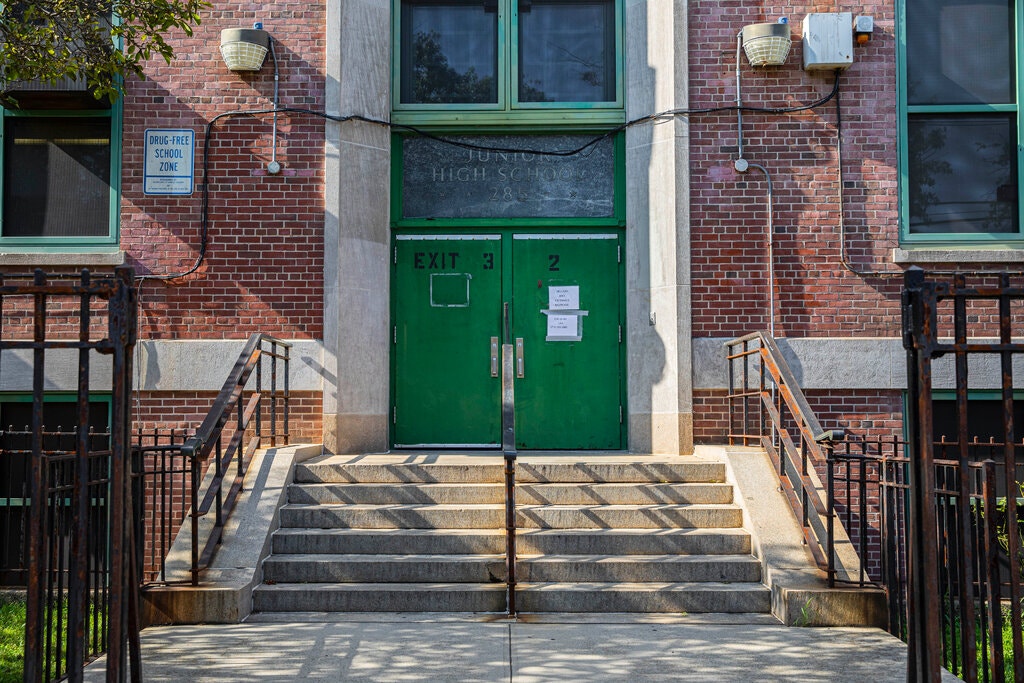
 i_need_contribute
i_need_contribute

Meyer Levin Junior High School in the East Flatbush neighborhood of Brooklyn. Fewer than 1 percent of Covid-19 tests statewide are positive, well below the 5 percent positivity threshold the C.D.C. has targeted as a safe standard for reopening schools.Credit...Hiroko Masuike/The New York Times
By Roni Caryn Rabin and Apoorva Mandavilli
New York State, the center of the worst coronavirus outbreak in the world four months ago, is now one of the few places in the country that may be able to safely reopen schools, several public health experts said after Gov. Andrew M. Cuomo gave districts permission to do so.
Mr. Cuomo announced Friday that public school districts across the state could hold in-person classes this fall, even as districts in many parts of the country where cases are still rising have abandoned the idea and will continue with remote learning.
In interviews, doctors, epidemiologists and other public health experts said that conditions were favorable throughout the state, including New York City, to bring children back — as long as safety precautions are in place. Some expressed concern that the effects of keeping students home were more worrisome.
As of Wednesday, fewer than 1 percent of coronavirus tests statewide were positive, well below the 5 percent positivity threshold that both the Centers for Disease Control and Prevention and the World Health Organization have targeted as a safe standard for reopening schools.
In New York City, the positivity rate is just slightly higher than the state average, with 1 percent of tests coming back with positive results. Mayor Bill de Blasio has said schools in the city would not open if the metric rises above 3 percent. A report last month from Harvard’s Global Health Institute also recommended opening schools only when the daily infection rate is less than 3 percent.
“If there’s any city that should be opening in the entire country or at least trying to open, it should be New York City,” said Dr. Uché Blackstock, an urgent care physician in Brooklyn and founder of Advancing Health Equity, a health care advocacy group, who has children in the public schools.
Dr. William Schaffner, an infectious disease expert at Vanderbilt University, said reopening the schools in New York was a bit of a “social experiment” or “trial run,” but added that the odds of success were good.
“New York’s chances of getting a good result, even though it is a densely populated metropolitan area, are actually better than in many rural areas, where they’re not nearly as serious about trying to control the virus,” he said.
New York also does well by another safety metric, the number of cases per capita. The Harvard report characterized regions with between one and 10 new cases a day per 100,000 people as “yellow zones,” areas suitable for in-person classes at all grade levels as long as proper infection control and social distancing measures are in place. New York is within this zone, with 23 cases per 100,000 over a seven day period, about 3.5 cases per 100,000 on a daily basis. The yellow zone recommendations are to give first priority for reopening to prekindergarten through fifth grade and last priority to high school.
The C.D.C. and public health experts generally agree on a range of measures that schools should adopt to protect children, teachers, staff members and their families, including mask wearing, physical distancing and improving ventilation in buildings.
Districts across the state have been told to come up with their own reopening plans, all of which must include those safety measures as well as plans for testing teachers and students, and are subject to approval by the state’s health and education departments.
Most experts agree schools should skip activities like chorus, band and sports involving physical contact; have children eat in classrooms instead of a central cafeteria; and take steps to prevent crowding in hallways.
“If the cases are under control — and I’m not defining what that means — then I think that there are precautions we can take that make going back to school worthwhile,” said Linsey Marr, an aerosol scientist at Virginia Tech. “If the cases in the community are low, there’s a smaller chance that someone who is infected will show up in school, and the precautions greatly reduce their risk of transmitting it to other students and teachers.”

Teachers marched in Manhattan on Monday to protest the reopening of schools. The New York City schools teachers’ union has opposed returning to school, citing safety concerns.Credit...Eduardo Munoz/Reuters
Like many other experts, Dr. Marr expressed concerns about the academic and developmental costs of keeping children at home, emphasizing the critical role schools play in their well-being and social and emotional development, in addition to academic learning. Schools also provide access to support services and meals for low-income children and facilitate parents’ return to work.
“It is of utmost importance that we educate our kids, and we should do everything possible to do that in person if community transmission is under control,” Dr. Marr said.